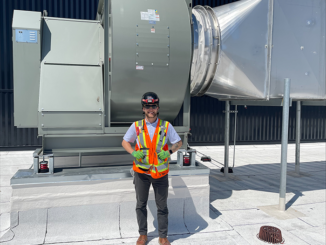

By / Michael G. McNally
“Oh, there’s a PLA on that job, okay.”
Chances are good every contractor has said this or something like it at some point in their career. Maybe you’ve also then thought to yourself, “What does that even mean? What is a PLA?” It’s a phrase in your vocabulary that perhaps you use with some regularity, but lack any depth of understanding.
PLAs are prevalent in publicly financed projects in Washington State. In 1996, Governor Lowry signed an executive order encouraging the use of PLAs on public works contracts. In 2015, the Seattle City Council passed an ordinance requiring their use on publicly funded projects of $5 million or more, and also requiring that at least 20% of all hours on such projects be offered to workers from disadvantaged zip codes.
With the new administration in Washington, DC, and high expectations for an infrastructure stimulus bill, observers expect that PLA requirements will be expanded on federally funded projects in the years to come.
A project labor agreement is a form of agreement, generally between a local building trades council or a group of unions, a general contractor, and sometimes the end-user or developer of the project. PLAs are often limited in scope and duration to a particular project or similarly financed projects, such as school construction. Bid specifications for projects covered by a PLA will note that successful bidders and their jobsite subcontractors will agree to abide by the terms of the PLA.
PLAs are used on both publicly and privately funded projects. While they are commonly associated with public works projects, large private end users, such as Toyota, large power cogeneration facilities owners, and sports stadium developers, also sometimes require the use of PLAs on jobs in certain markets.
PLAs establish terms and conditions of employment of employees on the jobsite. Certain PLAs also cover off-site fabrication and pre-assembly, and require that the employees involved in the fabrication be paid the economic equivalent of the collectively bargained rates. Importantly, PLAs set forth binding dispute resolution procedures and have ‘no-strike’ provisions to ensure the project continues without interruption.
PLAs universally require that the workers on the project be hired in accordance with the terms of the collective bargaining agreement for the scope of work they are performing—i.e. sheet metal workers must be hired through the sheet metal workers union hiring hall. Some PLAs allow a non-signatory employer to employ a fixed number or percentage of “core” or “tag-along” employees who are not hired through the union hiring hall. Such core employees working on a PLA must be paid wage rates consistent with the local union CBA’s rates, and fringe benefit contributions must be remitted on their behalf to the trust funds, even though they are not union members. These core employees may also be required to pay union dues, depending on the particular state’s laws.
A community workforce agreement (CWA) is a like a PLA and includes many of the same terms, but also incorporates a targeted hire provision that requires contractors to prioritize hiring of certain workers. CWAs are a more recent adaptation and were introduced in response to criticism that PLAs historically excluded members of the local community from the workforce. CWAs generally include a hiring goal—though sometimes it is a requirement—and cause local unions to adapt their hiring hall referrals to prioritize workers from the local community, historically disadvantaged or underrepresented groups, or economically depressed areas.
PLAs are highly controversial, and part of the centuries old dispute between unions and non-signatory employers. Supporters advocate that they protect wages, ensure a supply of skilled workers, and eliminate project delays and cost overruns. Critics argue they increase costs, stifle competition, and are inherently unfair to non-signatory employers.
Not surprisingly PLAs have faced many legal challenges.
While many of these cases turn on unique factual issues and obtuse legal questions, in a dispute involving clean-up of the Boston Harbor, the United States Supreme Court found that a state, when acting as a purchaser of construction services, can lawfully mandate a PLA on a project.
There are several more recent, notable decisions where courts have reached different conclusions about the lawfulness of a particular PLA’s terms.
In 2019, a Pennsylvania state court struck down a PLA covering a road construction project, finding that it violated the state’s competitive bidding laws. The PLA contained a unique carve out that excused United Steelworkers signatory employers from the requirement to hire from the local union, but all other contractors—signatory and non-signatory—were required to hire through the local unions’ hiring halls.
In 2017, the Third Circuit and a New Jersey federal court found that a city ordinance requiring the use of a PLA on certain redevelopment projects that received tax abatements was preempted by the National Labor Relations Act. The court held that the city was not acting as a purchaser of construction services, but instead as a market regulator, and therefore it could not impose a PLA requirement.
Locally, in December 2018, the AGC of Washington filed an unfair labor practice charge against 17 labor unions party to a CWA with the Washington State Department of Transportation for the SR-520 Interchange and Bridge Replacement Project, arguing that CWA was tantamount to a collective bargaining agreement, but the contractors were not given an opportunity to bargain over its terms. The charge was dismissed, and the denial affirmed on appeal. In its decision the Regional Director of the NLRB determined that there had not been any action taken to actually enforce the provisions of the CWA, which the AGC claimed were unlawful, and accordingly there had not been any violation of the National Labor Relations Act.
No doubt such legal challenges will continue.
Hopefully the next time you use the phrase PLA you can think to yourself, “Now I kind of know what I just said.” ▪
Michael G. McNally is a partner in the Minneapolis office of Fox Rothschild LLP. He works with clients in all aspects of benefits and labor law, including issues involved in collective bargaining, trust fund matters, and
withdrawal liability. He can be reached at 612.607.7094 or mmcnally@foxrothschild.com.



